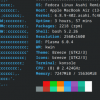Hacking OpenSUSE
There's more to SUSE Linux than simply installing it and going to work. To get the most from the operating system, you'll probably want to do some post-install fine tuning. This article by Jem Matzan explains how to: add download sources to YaST; install the Mozilla Thunderbird email client; add support for Java, Flash, Acrobat, Windows Media, MP3s, and RealMedia; play DVDs -- and more. It serves as a useful supplement to Steven J. Rosen's excellent how-to, "Installing SUSE Linux 10 on a Laptop," recently published here on DesktopLinux.com. When you're done installing SUSE Linux 10.0, your desktop system is not complete. If you installed the OSS version, you still need support for Java programs, MP3 audio files, and browser plugins for Macromedia Flash, Adobe Acrobat, RealPlayer, and Windows Media Video. If you installed the commercial edition you might have all of those things, but still not have support for playing DVD videos on your computer. Here's how to effectively make SUSE Linux 10.0 into a desktop powerhouse.
OpenSUSE is comprised entirely of free, open source software. What you will be doing in this tutorial is installing proprietary add-ons that add functionality. All of the browser plugins are proprietary and will require you to agree to software licenses. The DVD playback capabilities are in violation of the US Digital Millennium Copyright Act (and similar laws in other countries), which many believe to be unconstitutional and a violation of consumer fair use rights. (Further information on DMCA reform is available here.) In other words, installing the DVD decoding software could be illegal where you live; therefore I'm not telling you to do it, but I'll tell you how it's done for educational and informational purposes.









































































